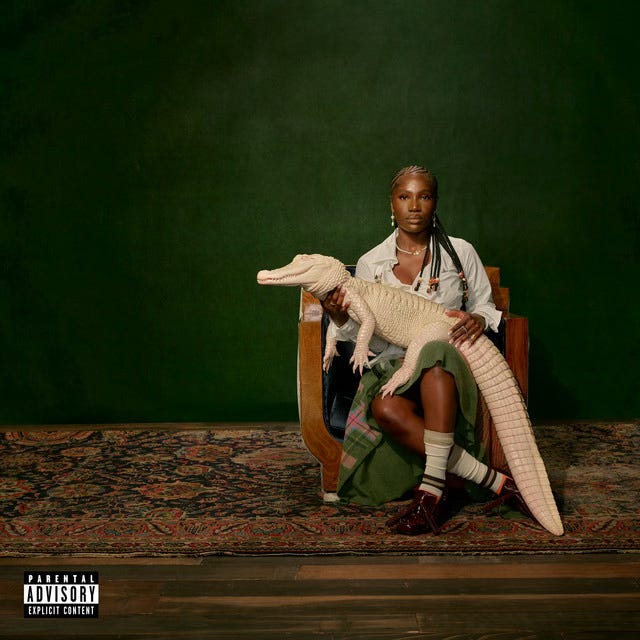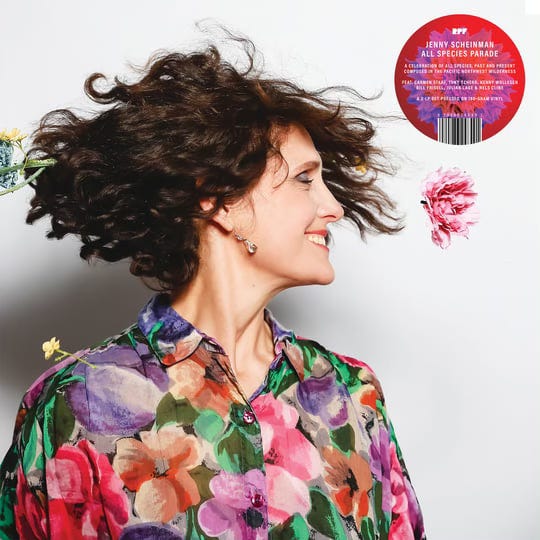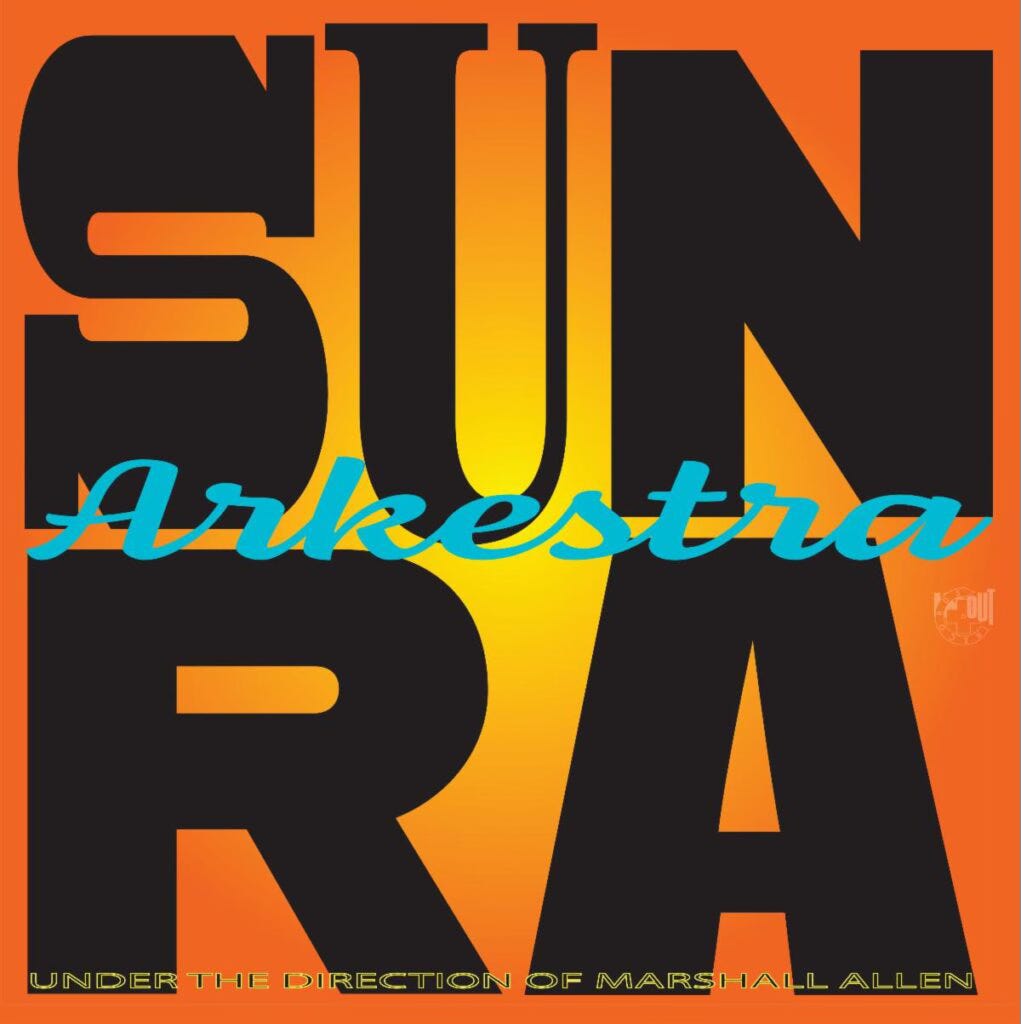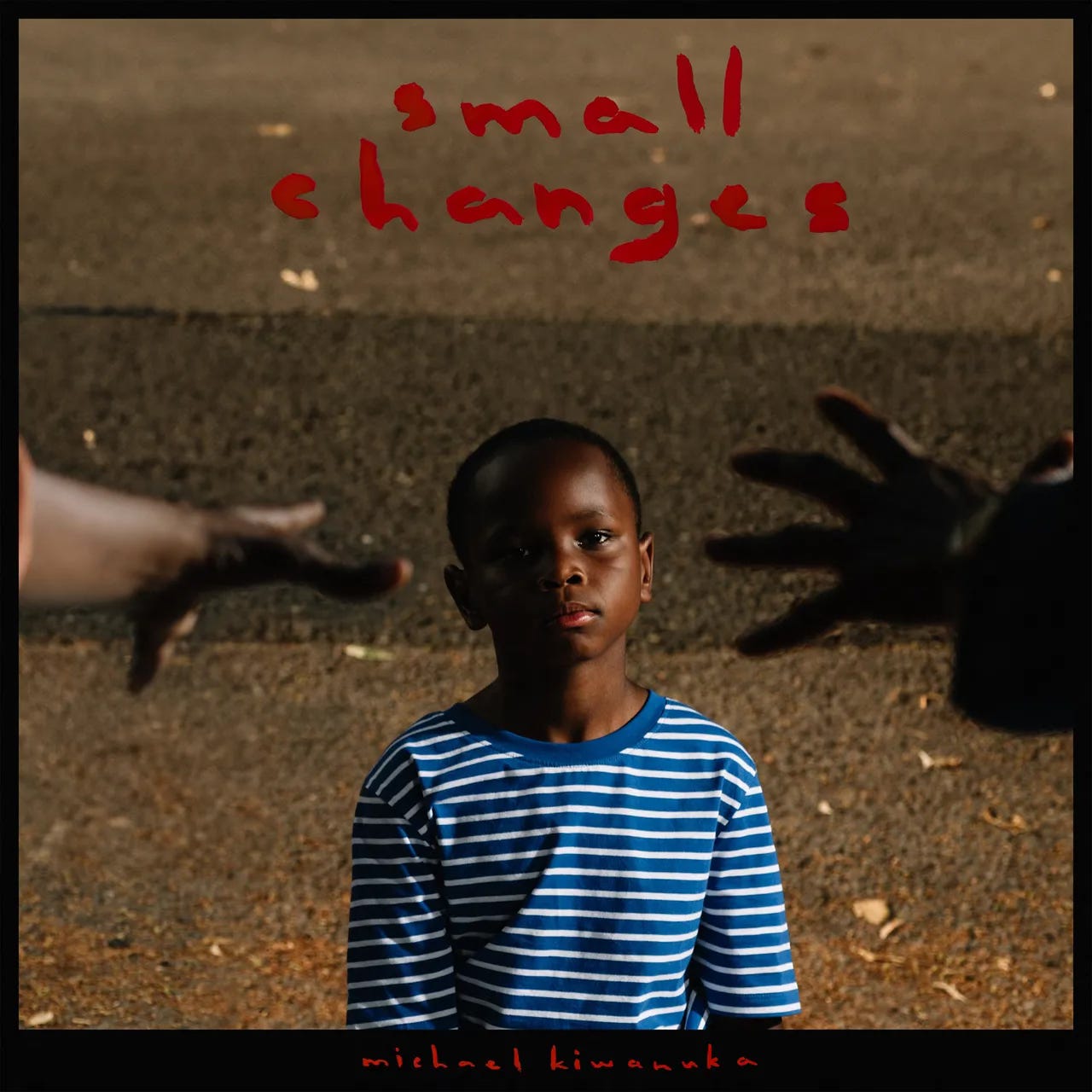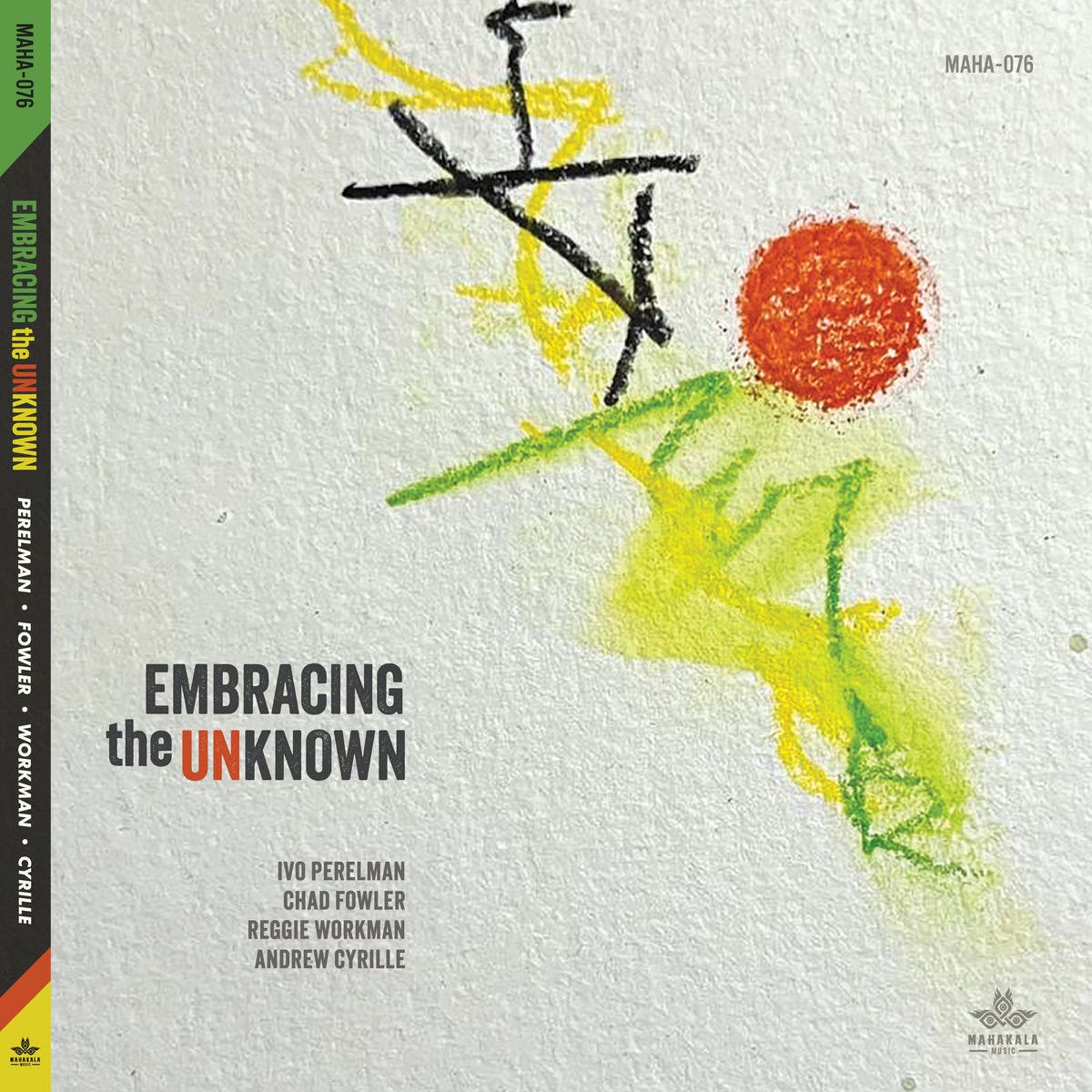Best New Records I Heard in January 2025
Full disclosure: all but a couple of these are late discoveries from 2024
Paper Jays – Paper Jays. An intriguing guitar duo from Rhode Island that bends music into shapes I haven’t encountered before, Paper Jays at first listen reminds me of an electric version of some of the modal music John Fahey used to do back in the late 60s. But, in addition to the fact that there are two actual players of the instrument, they throw in an extra guitar plugged into an amp providing a feedback drone on several songs. And, they’ve started working with a percussionist who adds all sorts of intriguing sounds to the mix. This debut record is a perfect fit for ESP-Disc, the record label most often associated with musical experiments that also have a bit of a populist feel to them. You don’t have to be a scholar to be entranced by the sounds on this record, even as they shift from beautiful to unsettling as things move on.
Hannah Juanita – Tennessee Songbird. For her second album, Juanita leans hard into older country forms and tropes – driving blues, honky tonk, a little Cajun influence, and self reference. Which is just fine, because she has crack musicians backing her up, and she sings with passion and believability. As good as these songs are, I have a feeling she’s going to dig deeper and come up with something extra special one of these days. For now, we’ve got “Hardliner Blues,” a song it would be easy to imagine Johnny Cash taking on when he was at Sun, but she sings with even greater ferocity. And we’ve got “Granny’s Cutlass Supreme,” a novelty love letter to a woman who refused to grow old, with Juanita’s lightning twang going up against a deep bass singer, Riley Downing, and ending as a draw. The rest of the album is tasty gravy after these two openers.
Dar Disku – Dar Disku. I gather the words “Dar Disku” translate from Egyptian into something like “Home of the Disco.” I think this record is by a pair of DJs who run a record label in Egypt that reissues old Egyptian disco records. But, I think it’s possible they also make new Egyptian disco records. (Update: Google to the rescue – the duo live in Great Britain, and they make new music with elements of quite a few West Asian and North African styles.)At any rate, the half hour it takes to listen to this album is pure pleasure. The music is obviously heavily discofied, but with elements of Egyptian styles which make things sound exotic to my Western ears. My feet don’t care, though – these are exciting grooves, with interesting melodic contours to keep me entranced.
Doechii – Alligator Bites Never Heal. “We ain’t got time to stop / The charts need me.” That line cracks me up every time I hear it, as do quite a few other humorous tidbits on this record. I thought this album was pretty good when I first heard it, but I set it aside in favor of some other things at the time. Then along comes all these year-end lists raving about it as one of the best hip hop records of 2024, and since I already knew I liked it, I figured I’d go back and see just how good it really was with repeated listens. Yep, it’s one of the best hip hop records of the year. Doechii sings her own hooks, and raps at blistering speeds or at relaxed tempos, dropping tough, sexy, intimate, and bragging lyrics all over the place. The beats are hard to resist, giving body-bouncing support to her skills on the mic.
Jenny Scheinman – All Species Parade. Scheinman’s violin playing has stood out in various jazz contexts over the last couple decades, most notably on some Bill Frisell albums I played a bunch for a while there. Frisell is here on Scheinman’s new one, along with fellow guitarists Julian Lage and Nels Cline. Yeah, that’s a lot of six string talent on one record. I’m not familiar with the rest of the band – Carmen Staal on piano, Tony Scherr on bass, and Kenny Wollesen on drums – but this is one talented ensemble. Scheinman’s writing rarely focuses on her violin – she’s prone to waiting until a tune is half over before she comes in at all. Given two LPs to work with, Scheinman makes variety the spice of this record. You’ve got an old-fashioned stomp, some jaunty danceable jazz, a nocturne, a rocker that sounds inspired by Neal Hefti’s “Batman Theme,” and some lush sounds. And while the guitars are gorgeous, Scheinman’s violin is more than lovely enough to make this record a standout.
Sun Ra Arkestra – Lights On a Satellite. More than three decades after his death, surviving members of the Sun Ra Arkestra, joined by younger acolytes, continue to carry on his musical legacy. Ra left behind hundreds of compositions and arrangements, some he had recorded before and some he hadn’t. Marshall Allen, now 100 years old, remains in charge of the band. His trademark splattering of notes is just one of 24 musical elements of the Arkestra for this recording. Material ranges from hypnotic dirges to big band swing to bluesy balladry to Dixieland revelry. The double album never lets up, and manages to be among the most exciting and big-hearted jazz releases to come along in ages. It’s got all the elements Sun Ra delighted in, and yet it never sounds as though it’s just paying homage to a lost giant. This is fresh and undeniable music.
Michael Kiwanuka – Small Changes. Nobody is required to have sex while listening to this record, but it sounds like bedroom music. It’s got lilting, smoothly regular rhythms, lithe and sensual melodies, and a general vibe of accompaniment to almost any pairing imaginable. As I have so far heard this only while working, I say it makes good company for filling out data for spread sheets as well. Kiwanuka is always evolving, and has so far done nothing that didn’t pique my interest. This reminds me of some of the early SAULT albums he was involved with, too. It’s low key and lovely.
Nick Gusman & the Coyotes – Lifting Heavy Things. As far as I know, I’ve never met Nick Gusman or any of his Coytoes, but as we all live in St. Louis, it’s entirely possible I’ve stood in line behind one of these guys at the local grocery store or pumped gas across from one at a Quick Trip or something. This is high quality rock’n’roll, your basic two guitar, keyboards, bass, drum, and violin band. Gusman writes songs with guts and glory about everyday life experiences, then sings them in explosive arrangements that allow the melodies to hold center stage and guitar and violin leads and fills to gather around them. It’s just plain old talent on display, always a good thing in my book.
Ric Robertson – Choices and Chains. I don’t know much about this guy other than he hails from North Carolina and currently lives in New Orleans and obviously loves a lot of great musicians who came before him. He’s a singer/songwriter who can convincingly deliver a sweet and gentle melody and then turn around and rock hard and loud with the next song. He in fact gets Sarah Jarosz to sing with him on the quiet opener, and gets Sierra Ferrell to rock out with him on the most intense cut on the record. Then he can manipulate a little bit of Tom Waits-styled clang, audition for a John Prine write-alike contest, and nail Randy Newman’s melodic and phrasing approach so well that I looked all over the internet to make sure Newman hadn’t released “Brother Sparrow” himself while I wasn’t looking. All this would be impressive enough, but each song – save possibly “Shellfish Bastard” which doesn’t live up to its title – stands out as well crafted, emotionally truthful, and just plain good music.
Miguel Zenón – Golden City. It’s possible if you know a lot about the history of San Francisco you may be able to get more out of this record. It is all instrumental music, though, and thus whatever Zenón may have had in mind is completely lost in the abstract nature of language absence. I don’t really care, though, because this record is a delightful on any terms. Zenón puts his alto saxophone into a tightly knit nine-piece ensemble with up to three trombones. His compositions are complex, with lots of places where instruments weave around each other. There are solos, but at least half and probably more of this record is composed. Zenón loves to play rhythms off each other, too, which keeps things constantly moving. The pieces generally have multiple sections, with lots of strong melodies for each of the front line instruments. Definitely a sleeper record for jazz fans.
Shabaka – Possession. This EP caught me by surprise – I had enjoyed Shabaka Hutchings on saxophone a few years back, but here he’s playing all flute, and the jazz influence is heavily mixed with ambient music. I had to check it out because Billy Woods is on one track – the 2:22 he’s included sucked me in, as his laid back rapping style perfectly matches the dark brooding sounds of the backing track. ELUCID is a rapper I didn’t know before – I love the gentle prodding Shabaka arranges for his verses here, and the presence of a harp works beautifully. So then we come to the longest cut of the record, a flute duet with André 3000. I hadn’t given André’s flute album a spin, so I don’t know if the interweaving of these two flautists here is anything like what he does there. I do know that despite the complete lack of recognizable harmonic or rhythmic development, I am entranced by the mesmerizing soundscape put together for this track. Esperanza Spalding stops by for an experimental vocal cut not too dissimilar to what she’s done on her own last couple records. Ndududo Makhatini is the guest on the last track, another ambient instrumental – I’m just not sure what he plays on it.
Out of/Into – Motion I. Blue Note Records has enough clout to put together five major young jazz players and have them tour together for months before recording their debut album as a group. As I’ve enjoyed Immanuel Wilkins on alto sax, Gerald Clayton on piano, and especially Joel Ross on vibraphones many times in recent years, I was absolutely ready for this ensemble record which also features Matt Brewer on bass and Kendrick Scott on drums. Though Wilkins and Ross tend to up the energy when they get solo spots, this album sounds like a thoughtful group effort, with everybody working to make the somewhat knotty but always slick compositions most effective. There are a lot of different directions in jazz these days – this represents the best of what lands in the mainstream if only by dint of being part of the one jazz record label big enough to get their records in stores and on radio.
Ivo Perelman – Embracing the Unknown. I’ve enjoyed a lot of Ivo Perelman records the past year or two – though I haven’t heard all of them because he releases something new every month or so. This is probably my fave, though. It’s a free jazz foursome, featuring Perelman on tenor sax, Chad Fowler on stritch and saxello (they’re both reed instruments, I believe, and sound somewhere up in the soprano sax range), Reggie Workman on bass and percussion, and Andrew Cyrille on drums. I’ve loved Cyrille since I saw him play a concert with David Murray in a university cafeteria some 35 years ago and he peformed a solo that utilized a table and chairs as if they were essential parts of a drum kit. He has the best touch of any percussionist I’ve ever heard, as you can hear in the opening few seconds of the twenty-one minute long title track here. All four musicians are listening closely to each other, and creating something spontaneous and magical out of whatever elements they choose to begin. The sound of this record alone is sublime – when Perelman and Fowler blend and chase each other around your ears, it’s like the music of the spheres.
Kokoko! – Butu. Let’s travel to Kinshasha, the capital city of the Democratic Republic of Congo. As with most African nations, we in the West hear little to nothing of what’s going on there these days. This record gives us some sounds that young people are making for themselves. The band here is working the EDM model, but the music from these synth, bass, and drum samples is combined with intensely exciting vocals which chant and shout and dance with the furious rhythms. I’ve not heard anything quite like what they are doing, and it took a couple spins to really wrap my head around it. I recognized right away that something special is happening, but repeated listens brought out the hooks and connective tissues within the songs. It lifts my spirits every time I hear it, though I have absolutely no idea what they are singing about.
Du Blonde – Sniff More Gritty. I haven’t encountered Du Blonde before, and their bio indicates they may have been a little less tuneful in the past (though I suspect it’s worth investigating). This record, though, is a joy. It’s indie rock with pop aspirations – there are a couple songs here which remind me of a low budget Olivio Rodrigo. Du Blonde can sing pretty piano ballads, but their forte is the three chord chugga-chugga rocker, with melodic swagger. Lyrics seem mostly about relationships and other young person stuff. Best of all is “Solitary Individual,” a duet with the great Lara Jane Grace which sets each singer into competition for catchiest swirling around the other. It’s a song about loving oneself first and foremost, too, which is always a good thing to remember.
Steph Richards – Power Vibe. I’m always on the lookout for something that doesn’t sound like what I’ve heard before, and this record – the fifth from this young trumpeter as a leader – fits the bill nicely. This is free improv jazz, except the freedom is tricky, since there are musical cues any player can drop which shift the music into a different, pre-arranged direction. Richards has a great tone on trumpet, and she likes to slide notes at random times, creating a subtly unsettling affect. Josua White on piano, Stomu Takeishi on either electric or double bass, and Gerald Cleaver on drums are all ably supportive of each other and capable of driving the music at any time. Solos are not the focus, even when one player takes a lead line. The intention always seems to be to find out what the others will do in response. For extra strange beauty, Max Jaffe (who plays drums instead of Cleaver on the live cut included here) adds what are billed as “sensory electronics” to the five studio tracks.
Alfredo Colón – Blood Burden. This saxophone player from Brooklyn has not released an album as a leader before, and doesn’t seem to have a lot of other recording credits (though one he does have was with Henry Threadgill, which is a great credit to have). He leads a potent quartet of lesser known players – Lex Korton on piano, Steve Williams on bass, and Connor Parks on drums. His compositions are deep, intense, emotionally powerful numbers which allow each member of the quartet to shine. But they shine as a group more than as individuals – everybody is playing to the needs of the music. Korton in particular feels like the grounding of the group – his rumbling, romantic piano chordings are what I think of first when I think of this record. But Colón’s sax parts are vital components as well. In addition to having the best jazz tune title I’ve seen in ages, “Our Simplest Office Clerk” shows off the way this band can ebb and flow from quietly pretty to evocatively explosive and back again. There’s also a take on a Son House number, “Grinnin’ In Your Face,” which I admit I didn’t realize wasn’t an original, but is even cooler now that I know its source.
Franz Ferdinand – The Human Fear. Ten years ago, the band Franz Ferdinand teamed up with the band Sparks to make one of my fave records, FFS. It helped me notice how much these two seemingly disparate acts had in common – a sense of humor, a sense of play, a sense of adventure. Franz Ferdinand has undergone some personnel changes, but the sound is the same for this new record. They gave us eleven insistently catchy rock songs with an equal emphasis on moving the feet as on melody and riffs. You want humor? Try “The Doctor,” sung from the point of view of a patient who doesn’t want to leave the hospital because he has nurses for friends and things to do. You want out of left field Kurt Weill influences? Check out “Black Eyelashes,” which marches its way into your heart. And you want the kind of thing you fell in love with this band all those years back? That’s the bulk of this record, an album equal to the best they’ve ever done.
Joan Armatrading – How Did This Happen and What Does It Now Mean. We’re coming up on the 49thanniversary of her debut album, and Armatrading has steadily pumped out records ever since. Somewhere around the halfway point of her career, she started playing almost all the instruments herself. As she had already been producing the records, this enabled her to gain complete control over how she wanted to present her songs. And those songs continue to be delights, with memorable and pleasing melodies telling tales of the ups and downs, ins and outs of love. She hasn’t lost anything from her voice, either – this is still the same singer who could breathe gently or shout convincingly all those years ago. Twice she interrupts the flow of the album with instrumental numbers showing off her ability to shred the guitar – I think she loves doing this stuff but knows if she put out a whole album of it she’d lose her loyal audience. She may be right – Though I enjoy the instrumentals, I come here for the clear-eyed love songs myself.






